Gas Spring End Fittings: Imagine you open the rear hatch of your SUV, and it rises effortlessly thanks to high-quality gas springs. The end fittings securely connect the gas springs to the hatch and the vehicle body, allowing it to stay open at any angle. As you pack in the bags and coolers, you appreciate how the hatch stays in place, providing easy access without worry of it slamming shut. The robust end fittings ensure durability, making this a reliable feature for years of family adventures.
In a cozy kitchen, you’re preparing dinner. You reach for a spice jar stored in an overhead cabinet. With a gentle pull, the cabinet door opens wide, thanks to the gas struts installed with sturdy end fittings. They keep the door open securely, allowing you to reach every jar without needing to hold the door up. You think about how those fittings are crucial in ensuring safety and convenience, preventing the door from falling unexpectedly, making cooking a seamless experience.
In each of these scenarios, gas spring end fittings are the unsung heroes that provide safety, convenience, and a touch of elegance to everyday experiences. Their reliability ensures that the mechanisms work smoothly, enhancing the overall functionality of various applications in our lives.
Gas Spring End Fittings Solution

Gas spring end fittings can face several issues, including wear and tear that reduces functionality, corrosion from exposure to moisture, and improper installation that leads to misalignment and uneven load distribution. Compatibility problems can arise when mismatched fittings prevent secure connections, while limited adjustability can restrict versatility in applications.
GASTAC addresses these challenges by offering high-quality, durable end fittings designed to withstand wear and corrosion. Their products ensure easy installation and compatibility, with adjustable options available, providing safe and reliable solutions for optimal performance in various applications.
What are gas spring end fittings?
Gas spring end fittings are components that connect gas springs to the structures they support, allowing for secure and stable movement. These fittings come in various types—such as ball sockets, eyelets, and clevises—each designed for specific applications. Made from durable materials like steel or plastic, end fittings ensure that the gas spring can function smoothly, providing support, controlled motion, and safety in applications like automotive hoods, cabinets, and industrial equipment.
What materials are gas spring end fittings made from?
Steel: Often used for its strength and resistance to wear, steel fittings are typically coated to prevent corrosion.
Aluminum: Lightweight and resistant to corrosion, aluminum is used for applications where weight reduction is important.
Plastic: Some end fittings may incorporate high-strength plastics, offering resistance to corrosion and reducing weight, though they are generally less durable than metal options.
Zinc Alloy: This material provides good strength and corrosion resistance, often used for specific applications requiring robust performance.
What are the different types of gas strut end fittings?
Bracket Gas Springs
Bracket gas springs feature a mounting bracket for easy installation, providing controlled lifting and support in various applications, from furniture to machinery.
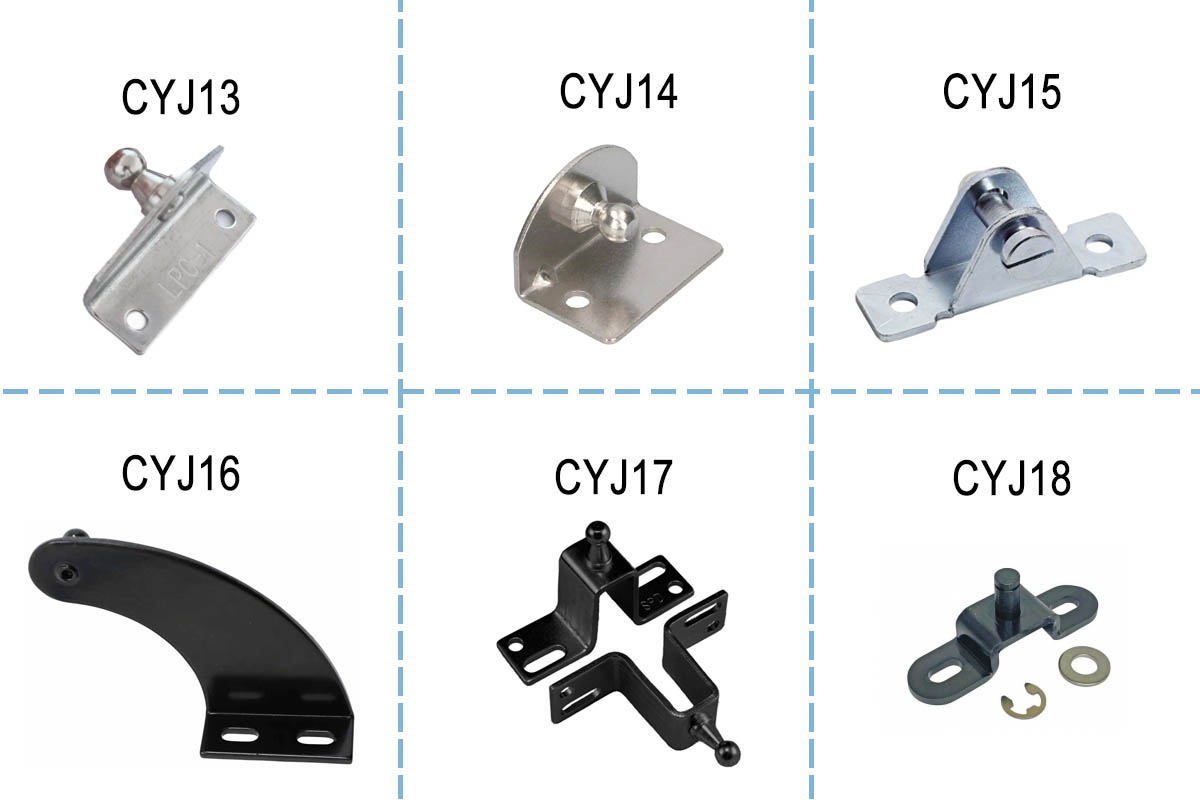
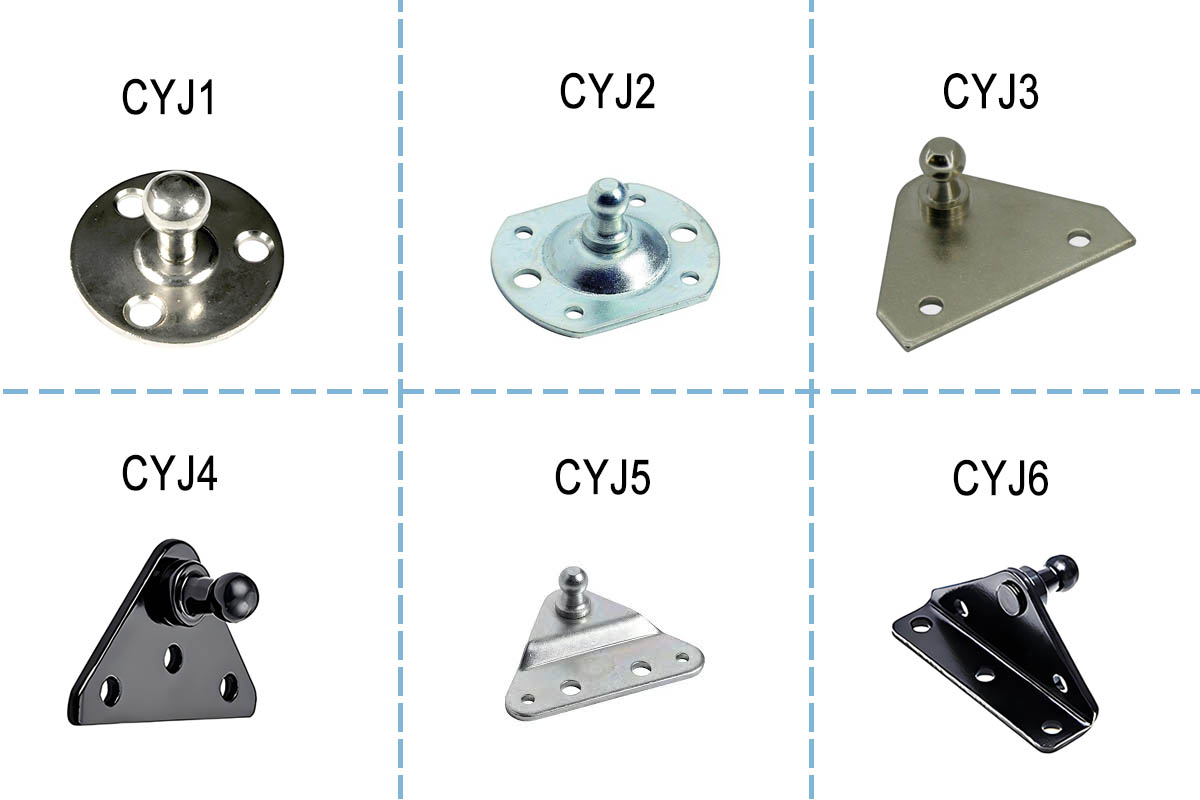
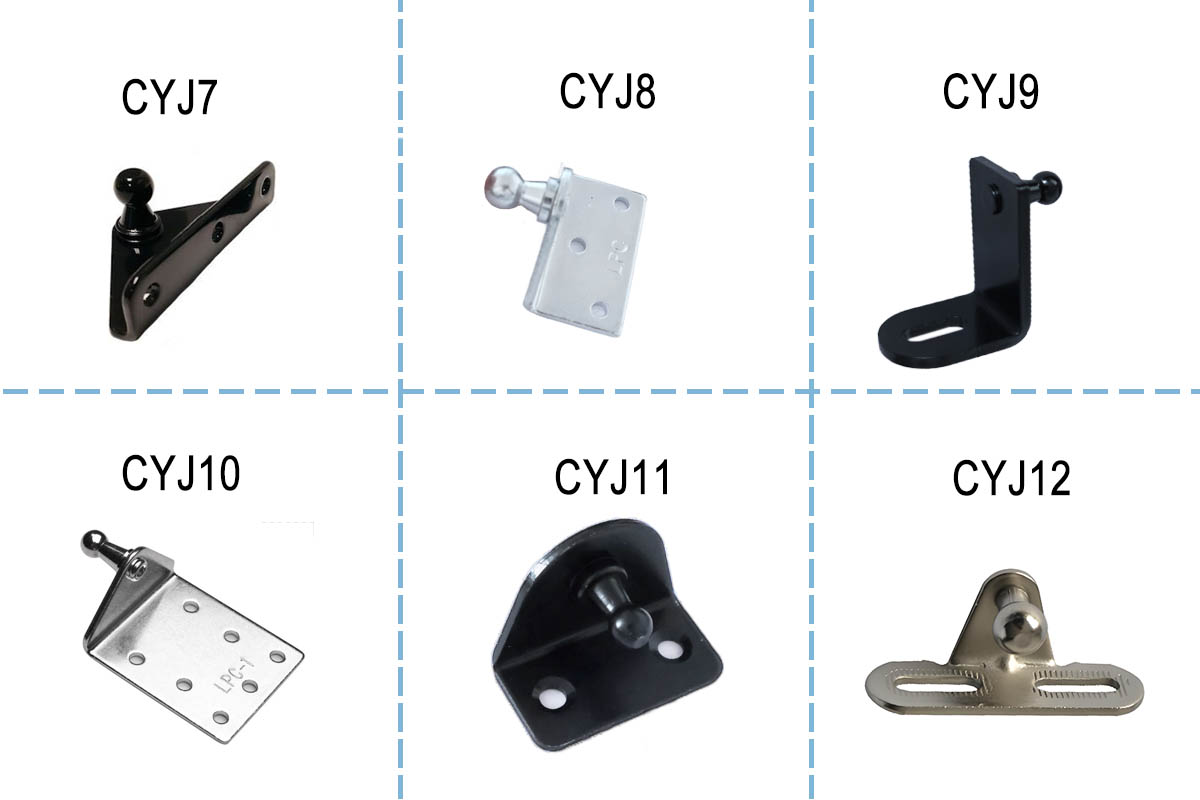
Clevis Joints
Clevis joints are forked connectors that secure a pin, allowing for pivoting movement. They’re commonly used in heavy-duty applications for reliable attachment.
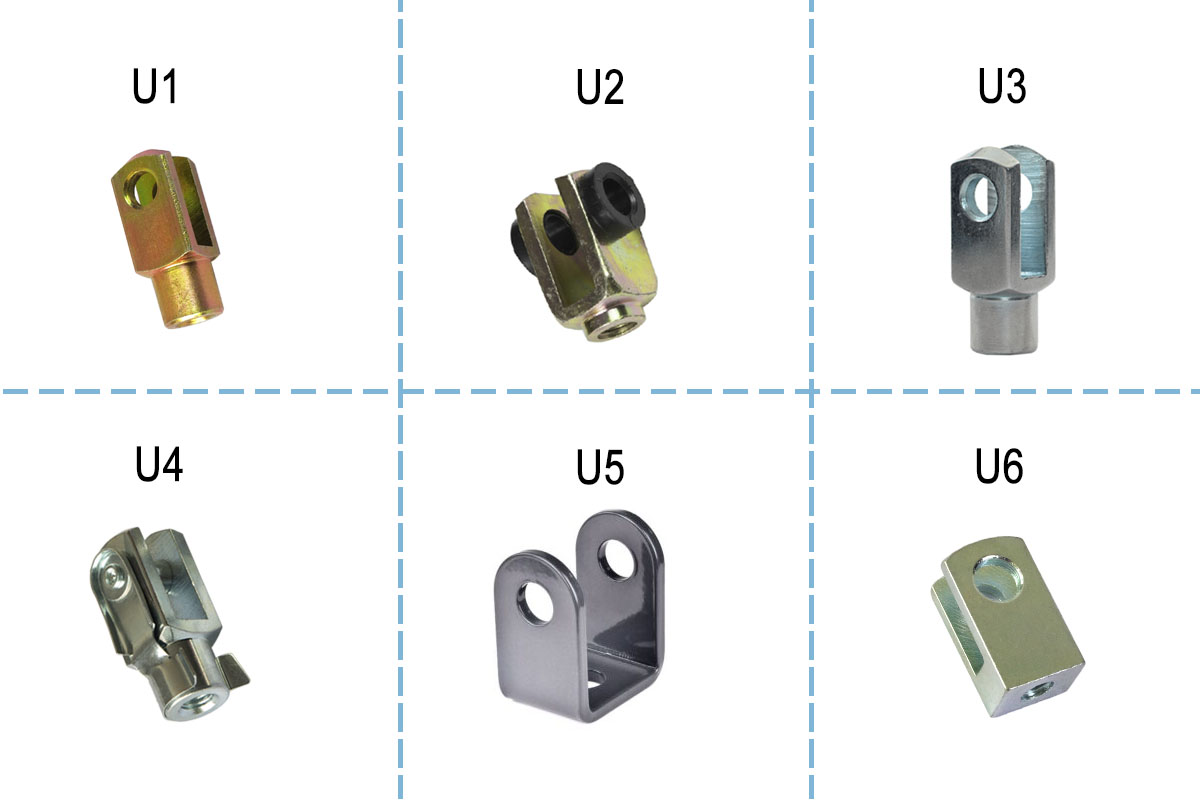
Female Rod Ends
Female rod ends are durable connectors with a threaded inner bore and spherical ball, allowing smooth multi-directional movement in various mechanical applications.
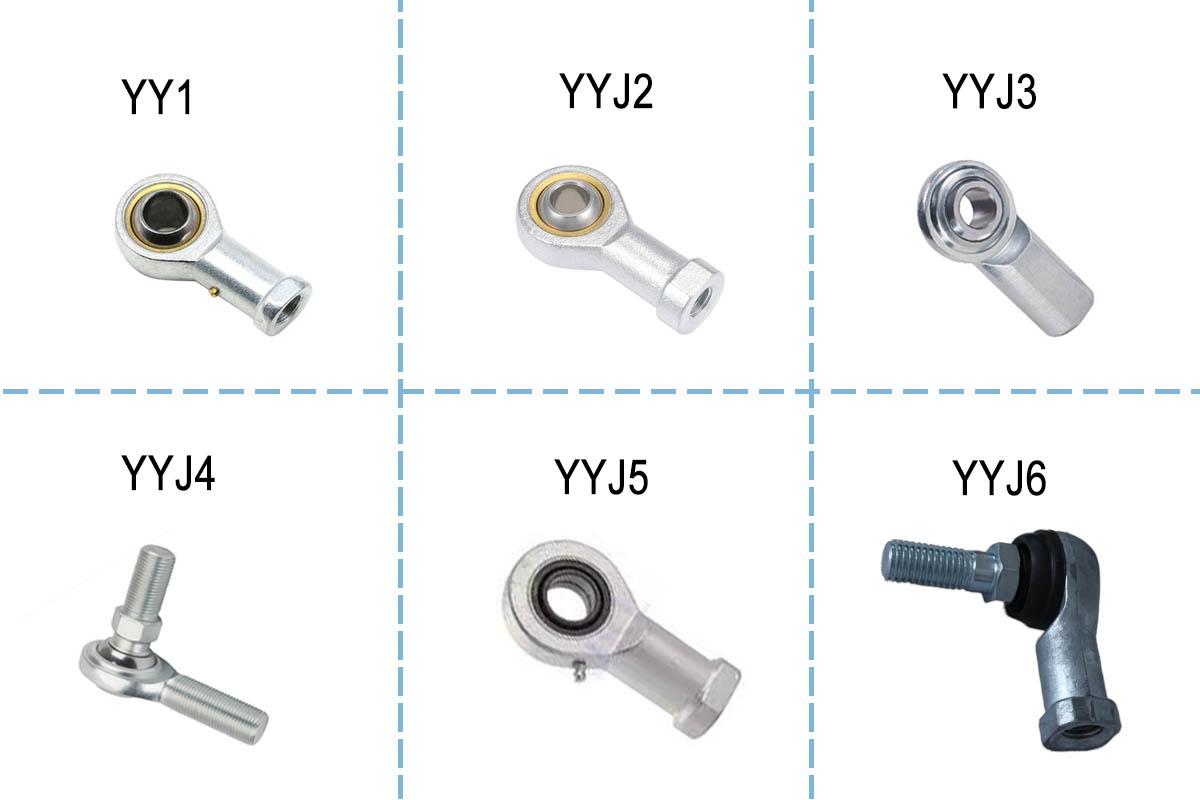
Gas Strut Ball Ends
Gas strut ball ends are spherical connectors that allow for smooth pivoting and movement, providing flexibility in applications like automotive and furniture mechanisms.
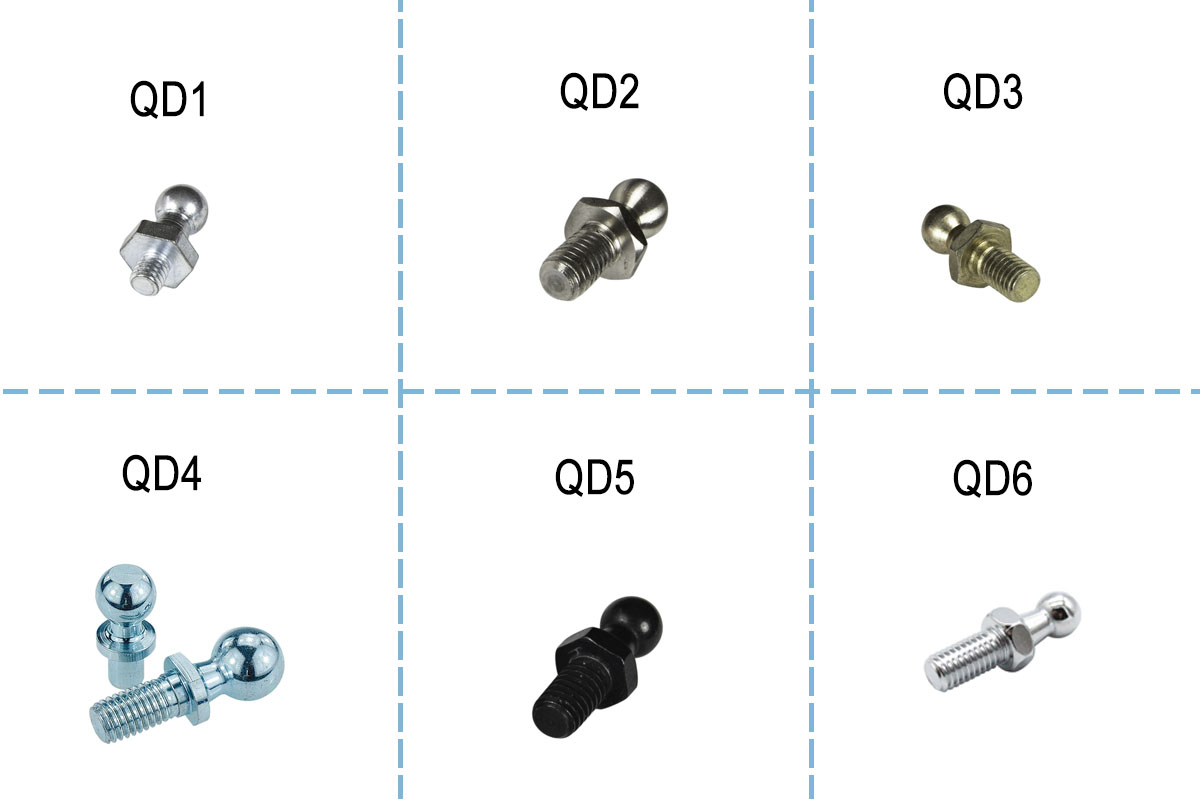
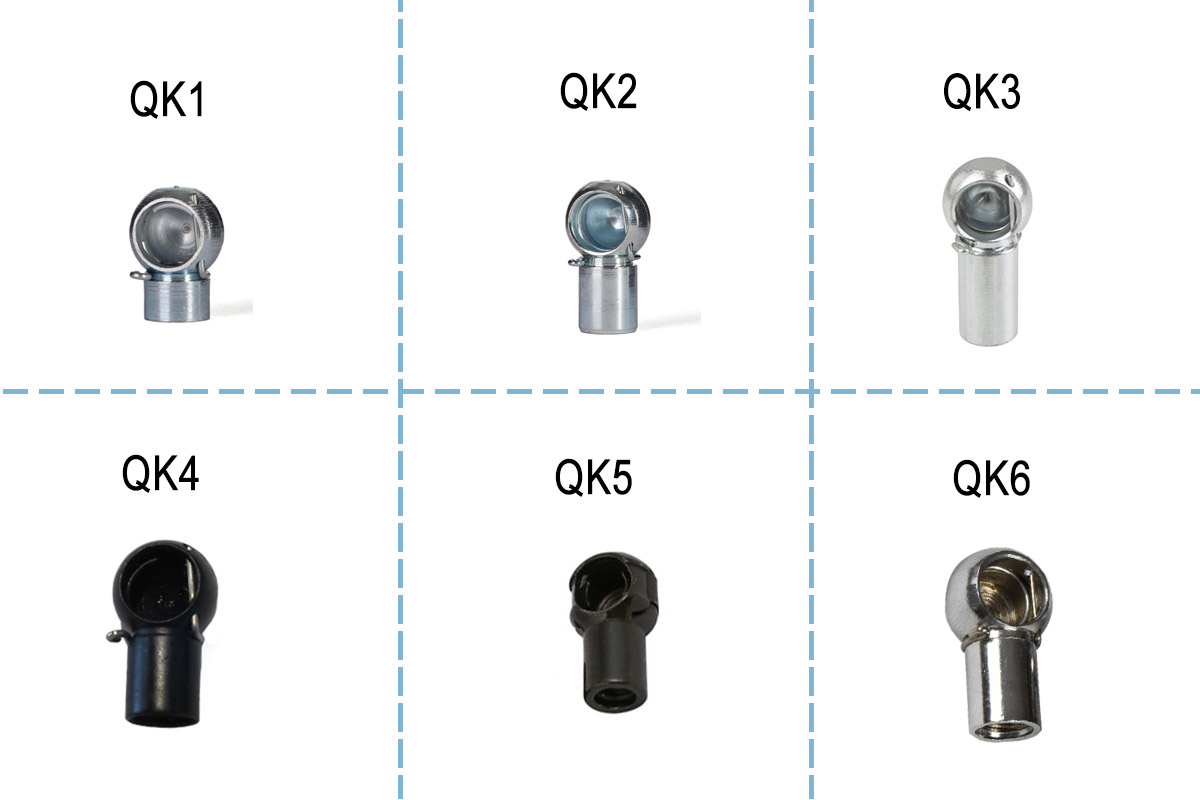
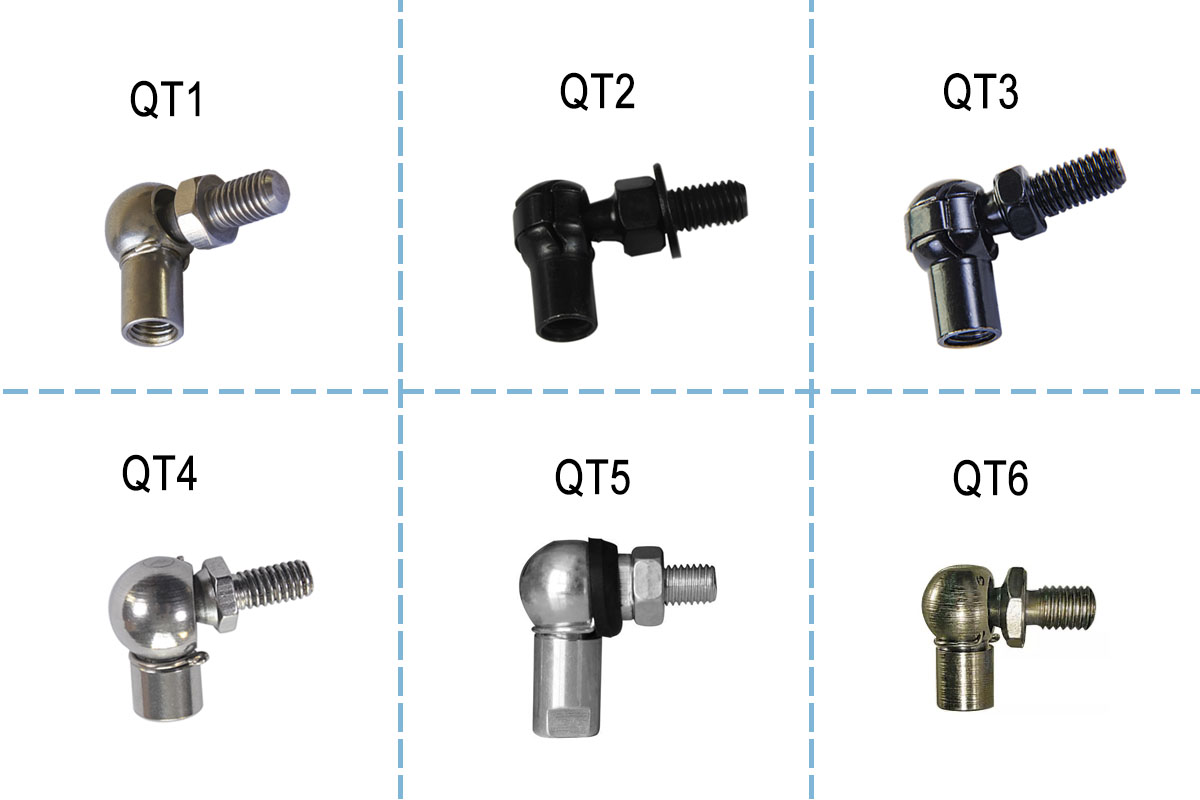
Eye End Fittings
Eye end fittings feature a circular hole for secure attachment, providing a simple and reliable mounting option for gas springs in various applications.
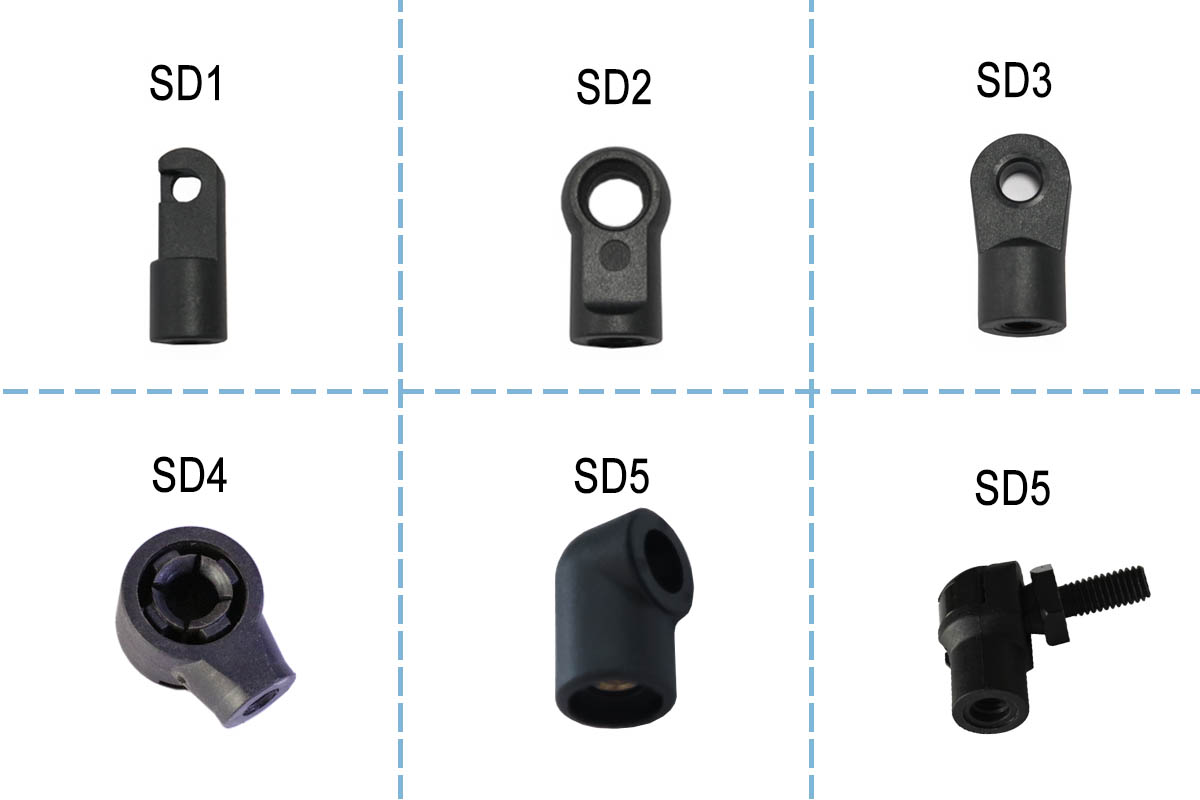
Locking Gas Strut Release Systems
Locking gas strut release systems securely hold loads in place and release them with a simple mechanism, ensuring safety and convenience in various applications.
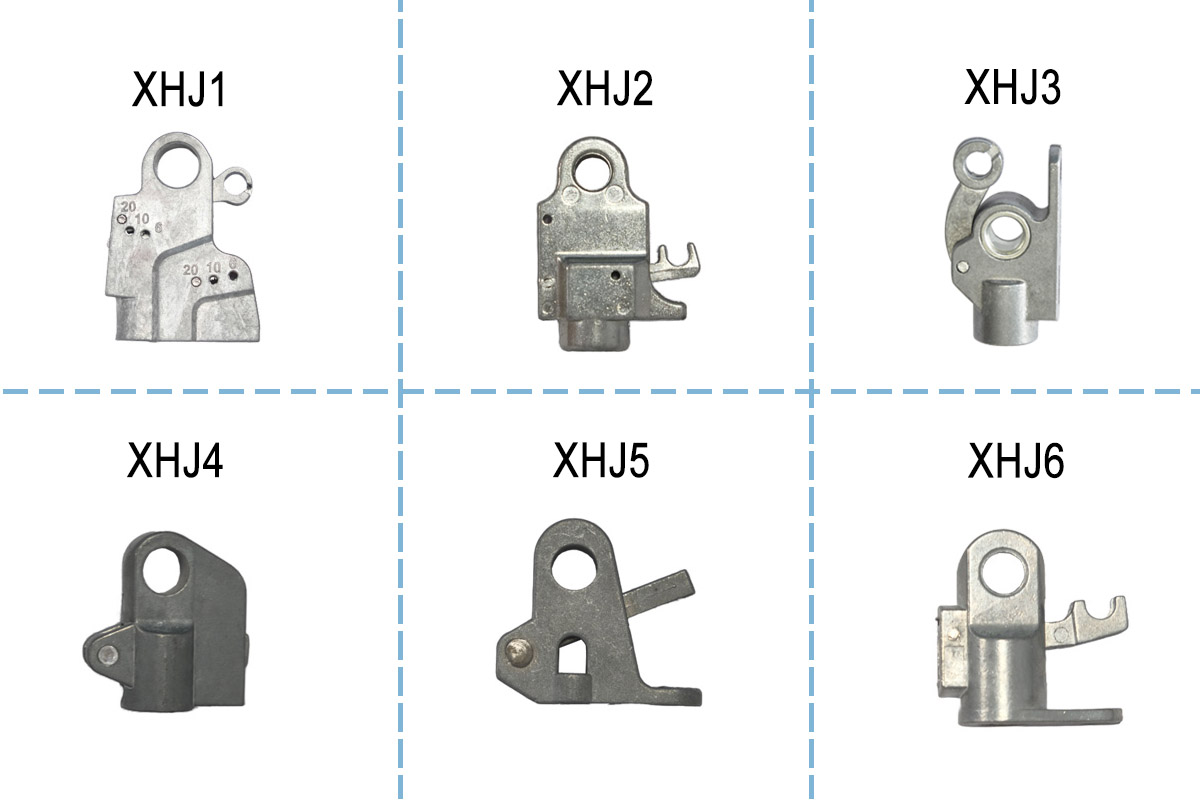
Plastic Ball Sockets
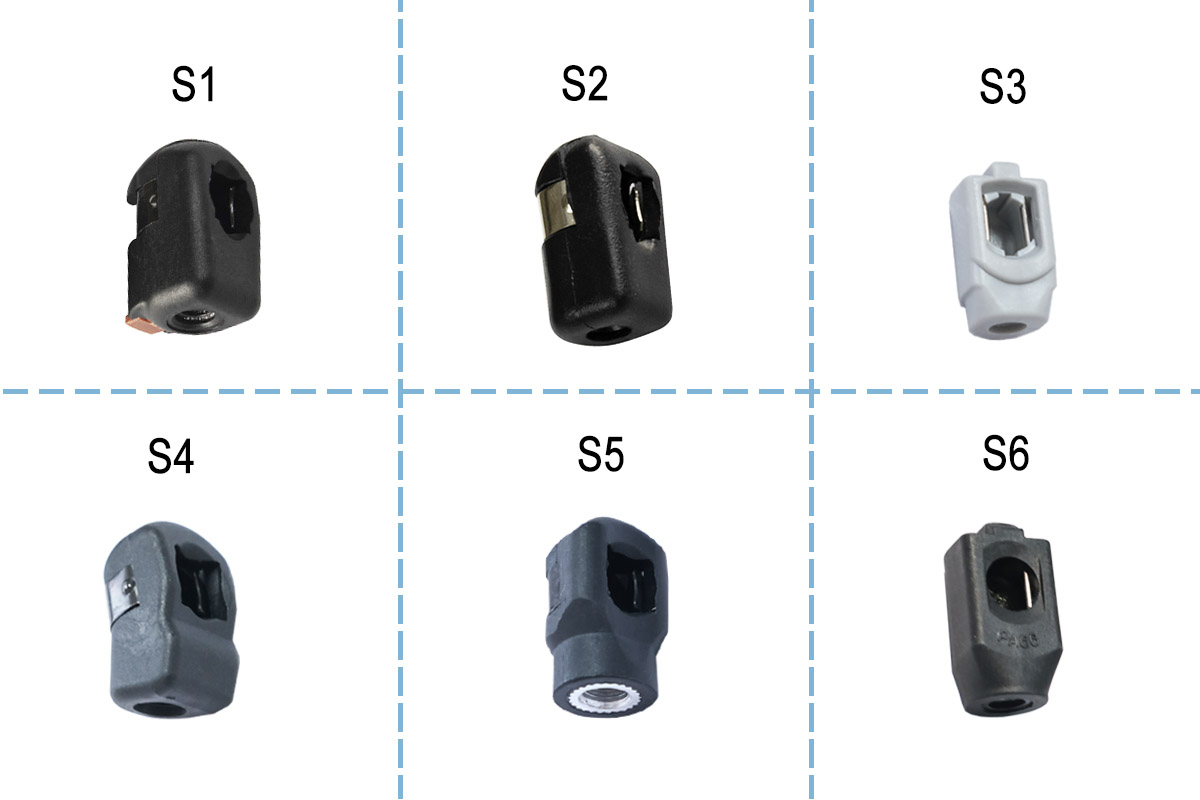


Can gas spring end be customized?
Yes, gas spring end can be customized to meet specific application needs. Customization options include selecting the fitting type (e.g., ball socket, clevis, eyelet) and materials like stainless steel for added corrosion resistance. Dimensions can be tailored to fit unique attachment points, and custom threading is available to ensure compatibility with various mounting requirements. Additionally, finishes or coatings can be added for extra durability in harsh environments.
What is the difference between ball sockets, eyelets, and clevis end fittings?
Ball Sockets: These fittings allow for rotational movement, making them ideal for applications needing flexibility, such as automotive trunks or hatches. They snap onto a ball stud for easy attachment and removal.
Eyelets: Eyelet fittings have a circular hole, offering a simple and secure mounting option. They provide a fixed connection and are commonly used in straightforward applications without the need for flexibility.
Clevis: Clevis fittings have a forked shape with a pinhole, creating a strong and stable attachment. They are suitable for heavy-duty applications where secure, fixed mounting is essential.
How much weight can gas strut end support?
The weight that gas strut ends can support depends on several factors, including the type of fitting, material, and design specifications. Typically, standard end fittings support between 50 to 500 pounds, with some heavy-duty fittings designed for industrial or automotive use capable of handling even greater loads. Material strength (e.g., steel or stainless steel) and secure attachment to the gas spring play crucial roles in determining load capacity.
Are gas strut end universal or application-specific?
Gas strut fittings can be both universal and application-specific. Universal end fittings are designed to fit a wide range of gas springs and applications, making them a versatile option for general use. However, certain applications—such as automotive, industrial machinery, or specialized furniture—require application-specific fittings designed for unique mounting requirements, load capacities, or environmental conditions.
What are the benefits of adjustable gas spring end fittings?
Versatility: They allow for fine-tuning of the spring’s performance, accommodating varying loads and applications without needing to replace the entire gas spring.
Enhanced Control: Users can easily adjust the tension or force exerted by the gas spring, enabling better control over movements, such as lifting and lowering.
Custom Fit: Adjustable fittings can be tailored to specific requirements, ensuring optimal functionality in different configurations or environments.
Improved Safety: By allowing for precise adjustments, these fittings help prevent unexpected movements, reducing the risk of accidents.
Cost-Effective: Instead of investing in multiple gas springs for different applications, adjustable fittings enable one spring to serve multiple functions, saving time and resources.
What problems can occur with gas spring end fittings?
Wear and Tear: Over time, end fittings may wear down, leading to decreased performance or failure of the gas spring.
Corrosion: Exposure to moisture and harsh environments can cause rust and corrosion, compromising the integrity and strength of the fittings.
Misalignment: Improper installation can lead to misalignment, causing uneven load distribution and inefficient operation.
Compatibility Issues: Mismatched fittings can prevent secure connections, resulting in unstable or ineffective performance.
Limited Adjustability: Some end fittings lack adjustability, which can restrict their versatility in various applications.
Loosening: Over time, fittings may loosen due to vibration or movement, potentially leading to detachment or malfunction.
How do I know if my gas spring end fittings are compatible?
Type of End Fitting: Identify the type of fittings on both the gas spring and the mounting brackets (e.g., ball sockets, eyelets, clevis). Make sure they match in design.
Size and Dimensions: Measure the diameter and dimensions of the end fittings. They should align with the size of the mounting points on your application.
Load Capacity: Ensure that the gas spring’s load capacity matches your application’s requirements. If the fittings are compatible but the spring is not rated for the load, it may not function correctly.
Mounting Orientation: Check if the gas spring is designed for the specific mounting orientation required by your application (e.g., vertical, horizontal).
Manufacturer Specifications: Consult the manufacturer’s documentation or website for compatibility information regarding end fittings and gas springs.
What are signs that gas spring end fittings need replacement?
Visible Damage: Look for cracks, bends, or significant wear on the fittings that could compromise their integrity.
Loose Connections: If the fittings feel loose or wobbly when connected, they may no longer provide a secure attachment.
Corrosion or Rust: Any signs of corrosion or rust can weaken the fittings and indicate the need for replacement.
Gas Spring Failure: If the gas spring is leaking or not holding pressure, it can put extra stress on the fittings, leading to potential failure.
Noise: Unusual noises like squeaking or rattling when the gas spring operates may signal issues with the fittings.
Where can I buy high-quality gas spring end fittings?
At GASTAC Gas Spring Manufacturer, you can find a variety of gas spring end fittings designed to meet your specific needs. They offer high-quality options that ensure compatibility and durability for various applications. Whether you need standard or customized fittings, GASTAC provides reliable solutions to enhance your gas spring performance.
Website: https://gastac.com/
Shop: https://shop.gastac.com/
Youtube: https://www.youtube.com/@Gastac-Gas-Spring/video
How do I choose the right end fittings for my gas spring application?
Identify the Type: Determine the specific type of end fitting required for your application (e.g., ball socket, clevis, eyelet).
Measure Dimensions: Measure the mounting points and ensure the end fittings’ sizes match (diameter, length, and shape).
Check Load Capacity: Ensure the end fittings can handle the load requirements of your gas spring and application.
Consider Mounting Orientation: Ensure the fittings are suitable for the intended mounting orientation (e.g., horizontal or vertical).
Review Manufacturer Specifications: Consult the gas spring and fitting manufacturer’s guidelines for compatibility and recommendations.
How do I install gas spring end fittings?
1.Gather Tools and Materials: You’ll need the gas spring, end fittings, appropriate tools (like a wrench or screwdriver), and possibly mounting brackets.
2.Prepare the Surface: Ensure the mounting surface is clean and free from debris. This will help ensure a secure fit.
3.Attach the End Fittings:
-For Ball Socket Fittings: Align the fitting with the mounting point and push it onto the ball until it clicks securely in place.
-For Pin Fittings: Insert the pin through the fitting and the mounting hole, ensuring it’s seated properly. Secure it with a cotter pin or retaining clip if necessary.
4.Check Alignment: Make sure the gas spring is properly aligned with the moving parts it will assist. Adjust if necessary.
5.Test Functionality: Once everything is installed, test the movement to ensure the gas spring operates smoothly without binding.
6.Final Checks: Tighten all fittings and ensure everything is secure before using the mechanism.


I appreciate, cause I found exactly what I was looking for. You have ended my four day long hunt! God Bless you man. Have a great day. Bye
Thank you for your affirmation. We will continue to update the article so that people with different understandings of gas springs can obtain valuable content.